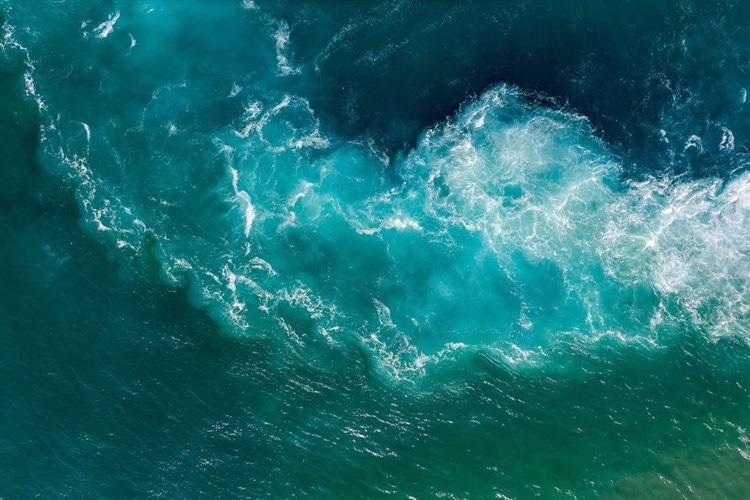In a study published in the journal Nano Energy, polyvinyl alcohol sponges mixed with poly(3,4-ethylenedioxythiophene):poly(styrene sulfonate) – "PEDOT:PSS, PP" – and carbon nanotubes (CNTs) are described as three dimensional dual-purpose solar-thermal (ST) evaporators for concurrent production of electricity and high-flux desalination.

Study: All-in-one Polymer Sponge Composite 3D Evaporators for Simultaneous High-flux Solar-thermal Desalination and Electricity Generation. Image Credit: Luciano Santandreu/Shutterstock.com
Producing Drinkable Water from Seawater
Sustainable energy solutions have the promise to give long-term answers to modern society's increasing need for potable water and clean energy. The co-generation of drinkable water and power using solar energy is a new technique that addresses both water shortage and energy requirements.
ST evaporation has attracted a lot of interest recently due to its capacity to generate potable water and electricity simultaneously. ST desalination of saltwater may create ample drinkable water by using clean energy from the sun. Potable water might potentially also be created by evaporation of adsorbed water from subsurface, atmospheric, and polluted water reservoirs. The localized interfacial heating configuration, in particular, has greatly improved the energy conversion performance in ST interfacial evaporative units.
Studies to date have focused on boosting the effectiveness and long-term durability of solar to vapor conversion in drinking water production by optimizing full-spectrum absorption of sunlight, lowering unwanted thermal losses, enhancing capillary supply of water, and minimizing salt fouling.
Although various innovative photothermal substances such as altered graphene, carbon-activated woods, polymeric hydrogels, and multilayer films have been utilized to build interlayer evaporative setups, the generation performance of drinkable water is still limited by the complicated production process, inadequately interconnected structures, high salt fouling, and low vapor output.
Generating Electricity from Seawater
In the ST system, the evaporating mechanism also creates a thermal differential. To produce power, thermo-galvanic batteries and thermoelectric modules had previously been incorporated into solar energy based interfacial evaporative systems. The robust photovoltaic modules take up most areas in these setups, and the resulting evaporation of water happens exclusively on the outer surface. Furthermore, the complicated packing of various components inside the evaporator raises worries about leaking of chemicals and long-term durability.
In solar energy based interfacial evaporators, there is a continual guided capillary water flow from the main water body towards the evaporative interface. When treating saltwater or highly concentrated brine, the directed mass movement of ions inside the ST evaporative systems may cause a stream current. The stream strategy offers another tempting option to produce power continually while having no impact on evaporative efficiency.
Thus far, all of the known dual-purpose evaporators have been built of 2D sheets, and the vapor production rates have been quite small. Poor evaporative rates hamper potable water generation and limit the movement of salt ions, limiting electrical power output. Attaining a fine balance between water generation and energy production from a given solar input remains a significant problem in this study area.
Key Findings of the Study
The team showed the concept and manufacturing of all-in-one PVA sponge composite three-dimensional evaporation systems for high-output ST evaporation and energy production. The composites have a good solar absorption (95%), a high-porosity structure for quick water wicking, a high capacity for storing water and anti-salt fouling, a markedly increased 3D evaporative area, a lower enthalpy of water evaporation, and negatively charged ionic flow paths. During one solar irradiation, an evaporation rate substantially greater than that recorded in traditional 2D evaporators, a converting efficiency of almost 95%, and a high synchronized ion-voltaic potential were attained.
The PP raised the zeta potential of the PVA skeletons and created ionic paths inside the composites. Cl ions move through the ionic paths and form a steady voltage when pushed by the evaporative movement of saltwater under sun irradiation. The evaporative electrical output may be customized by varying the electrode separation, sunlight power density, and the number of linked sponge evaporators.
The evaporator may provide enough potable water for personal drinking needs by linking numerous sponge composites in series, and the produced electricity could be retained inside capacitors to run tiny electronic equipment such as LEDs. The CNT-PP-PVA sponge's all-in-one design enhanced evaporative output, anti-salt fouling effectiveness, durability, and scalability and offers a novel strategy to optimize sunlight usage for freshwater and electricity generation.
Continue reading: Can this Novel Nanocomposite Improve Solar Energy Performance?
Reference
Xu, Y., Xu, J., Zhang, J. et al. (2021). All-in-one polymer sponge composite 3D evaporators for simultaneous high-flux solar-thermal desalination and electricity generation. Nano Energy. Available at: https://www.sciencedirect.com/science/article/pii/S2211285521011319?via%3Dihub
Disclaimer: The views expressed here are those of the author expressed in their private capacity and do not necessarily represent the views of AZoM.com Limited T/A AZoNetwork the owner and operator of this website. This disclaimer forms part of the Terms and conditions of use of this website.